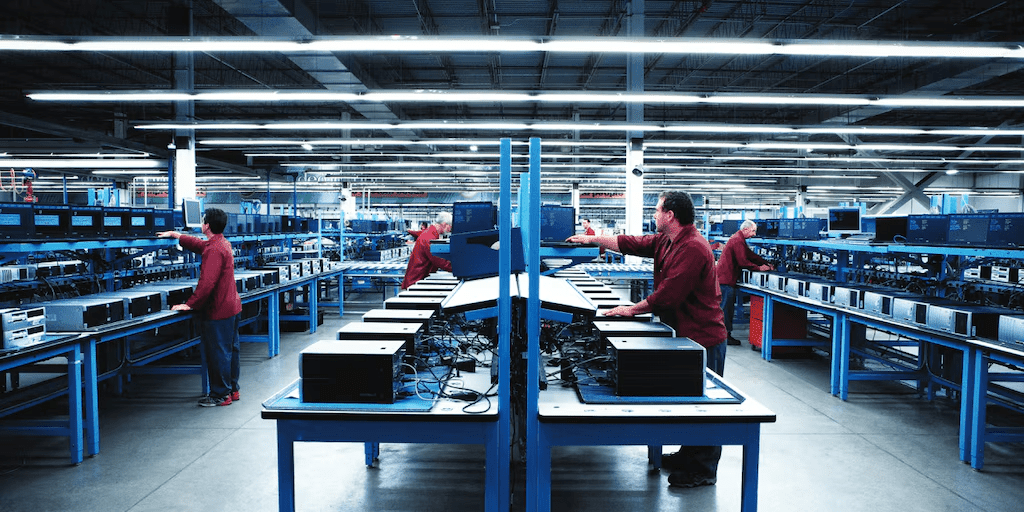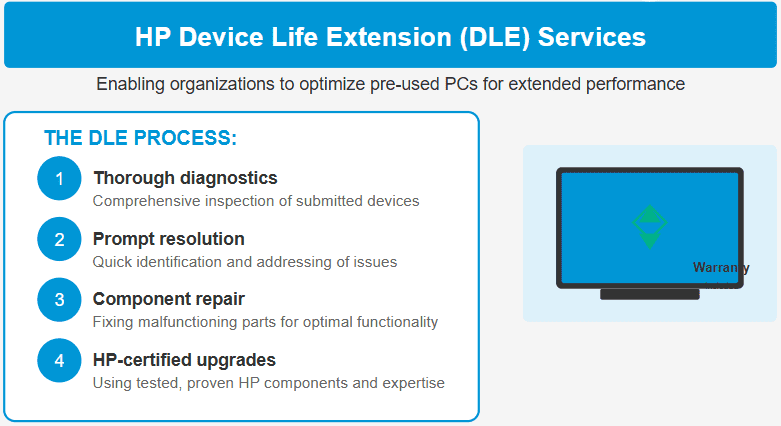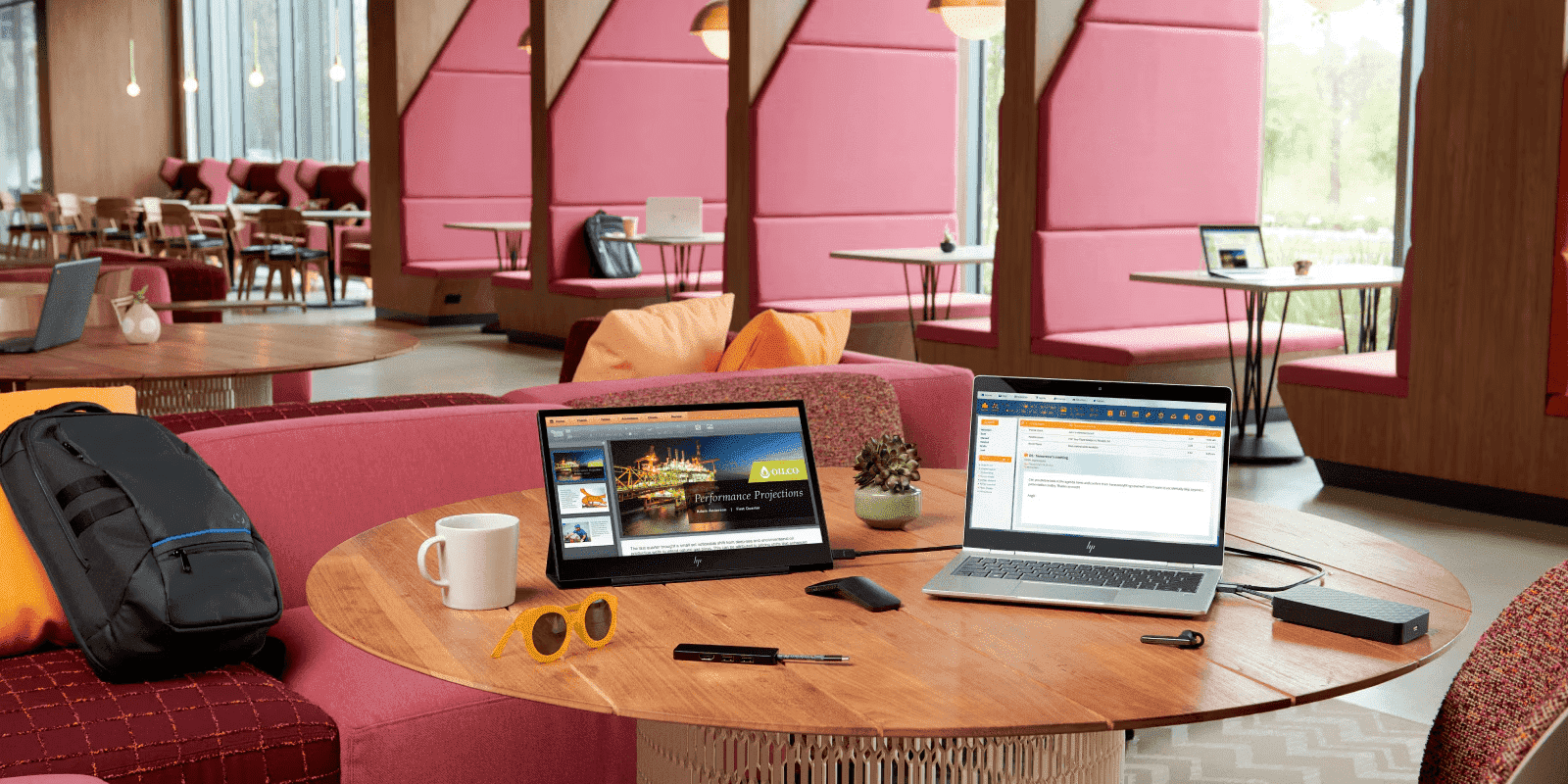Thank you for visiting the MALAYSIA HP Store
-
Contact Us
CONTACT USCall us
- Sales
- 1800 88 4889
- Technical support
- 1800 88 4889
Mon-Fri 8:30AM to 5:30PM
(exc. Public Holidays)
Chat with us- Our specialist are here to help
- Live Product Demo
- Sales
- 60166999350(WhatsApp)
-

Mon-Fri 8.30am - 5.30pm
(exc. Public Holidays)
Live product demo
Store finder Locate our storesSubmit feedback We value your opinion! - Location
- My Account
Sustainable Technology: HP’s Green Computing Initiative in Malaysia


In today’s rapidly evolving business landscape, Malaysian organizations are increasingly recognizing the importance of balancing technological advancement with environmental responsibility. As Malaysia continues its commitment to achieving carbon neutrality by 2050, businesses are seeking innovative ways to reduce their environmental impact while maintaining operational efficiency.
HP provides cutting-edge solutions that help Malaysian businesses align their technology needs, environmental objectives, and business goals. With sustainability becoming a core consideration for companies across Southeast Asia, HP is committed to helping Malaysian businesses successfully integrate green computing initiatives into their vision, enhance their reputation, and secure long-term profitability.
This article explores HP’s Green Computing Initiatives and their benefits to Malaysian organizations seeking to reduce their carbon footprint while optimizing technology investments.
What is Green Computing?
Green computing or green IT is the eco-friendly approach to computer design, production, use, and disposal. It seeks to minimize environmental risk through lower carbon emissions and power consumption among producers, data centers, and consumers.
Green computing also involves ethically sourcing parts, minimizing electronic waste, and encouraging product recycling. It enhances a company’s ESG (environmental, social, and governance) value by reducing its carbon footprint and e-waste. Strong ESG values make the company more reputable and attract investors, which is increasingly important for Malaysian businesses competing in the global marketplace.
The 3 R’s of Green Computing
Green computing operates on the 3R model (Reduce, Reuse, and Recycle):
-
Reduce: Minimizing energy consumption via power optimization, deployment of energy-efficient hardware, and virtualization practices
-
Reuse: Extending technology product life through refurbishment, resale, and repurposing of hardware
-
Recycle: Correct recycling of obsolete hardware to prevent the accumulation of e-waste and recover precious materials
This approach aligns perfectly with Malaysia’s Shared Prosperity Vision 2030, which emphasizes sustainable development and responsible resource management.
Understanding HP Green Computing Initiative
As a leader in green IT solutions, HP recognizes the challenge of balancing technology-driven business growth with environmental responsibility. HP’s green computing initiative features certified refurbished hardware, energy-efficient hardware, device life extension services, and carbon-neutral computing options.
For Malaysian businesses, HP’s approach to sustainable technology offers triple benefits:
-
Cost Reduction: Through energy-efficient devices that lower power consumption and operational expenses
-
Risk Management: Through environment-friendly components that enhance compliance with environmental regulations and minimize legal and reputational risks
-
Sustainable Growth: Green IT solutions enhance brand reputation and attract ESG-focused investors and customers in Malaysia’s increasingly eco-conscious market


HP Design for Environment
Green tech begins with product design. The HP Design for Environment program focuses on minimizing negative environmental impacts through environment-friendly product design.
It satisfies three core areas of environmental responsibility:
-
Energy efficiency
-
Materials innovation
-
Design for recyclability
Benefits include:
-
Reduced costs by designing products with fewer materials and optimizing packaging
-
Energy-efficient hardware designed to reduce consumption during use
-
Incorporation of recycled materials such as recycled plastic from DVDs, ocean-bound plastic, and recycled magnesium in manufacturing
With Malaysia’s extensive coastline, the use of ocean-bound plastic in HP products is particularly relevant to local environmental concerns. This approach helps address marine pollution issues while creating sustainable technology solutions for businesses and consumers.


HP Business Services for Sustainable Operations
Beyond hardware solutions, HP offers Malaysian businesses comprehensive services designed to extend device lifecycles and reduce environmental impact.
HP Device Life Extension (DLE) Services
HP Device Life Extension Service enables Malaysian organizations to send pre-used PCs for performance optimization, extending their useful life and reducing e-waste.


HP Device Life Extension Service enables Malaysian organizations to send pre-used PCs for performance optimization, extending their useful life and reducing e-waste.
The service includes:
-
Thorough diagnostics to identify performance issues
-
Prompt resolution of software-related problems
-
Component repair or replacement as needed
-
HP-certified upgrades to extend device lifespan
Note: HP devices are eligible for one-time DLE services if customers buy a care pack containing this service. Devices should also be within their end-of-service life (EOSL) date to qualify for DLE services.
For more information on HP Care Packs, visit HP Care Pack Finder.
HP Energy-Efficient Infrastructure Solutions
HP delivers energy-efficient solutions in three key areas that are particularly relevant to Malaysian businesses:
Energy-Efficient Data Center Design Services
These services help Malaysian businesses achieve optimal energy efficiency through data center designs that enable low PUE/high DCiE results. HP multi-tiered hybrid designs reflect business infrastructure requirements, reducing energy use and capital costs—a critical consideration in Malaysia’s competitive business environment.
Power Management Software
Embedded technology such as the HP Thermal Logic enables businesses to “cap” the amount of power allocated to an enclosure. It allows dynamic power distribution to servers when the business requires capacity.
HP power management software can manage power more effectively, prevent outages, and regulate resource allocation based on IT workload needs and uptime objectives—particularly valuable in Malaysia where power efficiency is increasingly important for both cost control and environmental impact.
Next-Generation, Energy-Efficient Data Centers
HP provides shared infrastructure options with IT outsourcing, enabling the deployment of next-generation energy-efficient data centers that can help Malaysian businesses reduce their carbon footprint while maintaining high performance.
Examples of HP power energy-efficient infrastructure include:
-
HP thermal zone mapping: 3D representation of data center air conditioning for better optimization and energy efficiency
-
HP Critical Facility Services: Expert customizable assessment and site planning services to evaluate and develop efficient power and cooling strategies for better utilization
-
HP Light’s out remote management service: Combines the workload of several underutilized servers on a single server that is utilized more efficiently, reducing power footprint with fewer servers needed to do the same amount of work
-
HP virtualization: Delivers total remote control with energy-efficient management software that delivers centralized control, reliable security, and energy savings for HP commercial hardware
How HP Green Computing Initiatives Benefit Malaysian Businesses
Cost Savings and Energy Efficiency
For Malaysian businesses operating in an increasingly competitive market, one of the most tangible benefits of HP’s green computing initiatives is cost reduction through:
-
Lower Energy Bills: HP’s energy-efficient infrastructure solutions help businesses optimize energy consumption, reducing power costs—a significant advantage in Malaysia where electricity costs have been rising
-
Hardware Longevity: HP’s Device Life Extension (DLE) Services enable companies to extend IT assets lifespan, minimizing hardware replacement costs
-
Reduced Cooling Costs: Solutions like HP Thermal Zone Mapping improve data center cooling efficiency, leading to significant reductions in air conditioning costs—particularly important in Malaysia’s tropical climate
Improved IT Performance and Reliability
Green IT solutions do more than save money—they also enhance performance, which is crucial for Malaysian businesses competing in the digital economy.
HP’s Power Management Software ensures optimal resource allocation, preventing outages and maximizing uptime. Virtualization technologies and remote management services further optimize IT operations, reducing downtime and improving overall efficiency.
Compliance with Malaysian and Global Regulations
As Malaysia strengthens its environmental regulations to meet international standards, businesses face increasing pressure to reduce their carbon footprint. HP’s sustainable computing solutions help businesses align with both local and global sustainability standards.
For Malaysian businesses engaged in international trade, demonstrating strong environmental credentials is increasingly important for accessing global markets and securing partnerships with overseas companies that have strict supplier sustainability requirements.
Competitive Advantage in the Malaysian Market
The use of HP’s sustainable product design can strengthen brand image and attract ESG-conscious investors and customers. As Malaysian consumers become more environmentally aware, businesses that demonstrate a commitment to sustainability gain a competitive edge in the marketplace.
For more information on how HP can help your business achieve its sustainability goals while optimizing technology investments, visit HP Business Advantage.
Conclusion
The importance of green computing continues to rise as Malaysian companies strive to meet their sustainability goals in line with the nation’s commitment to carbon neutrality. As green technology gains more adoption, the demand for energy-efficient IT solutions will also increase. Power optimization through AI, circular economy patterns of IT equipment, and carbon-neutral computing innovations will characterize the future of green IT in Malaysia.
Organizations can stay ahead of the trend by adopting HP’s green computing initiatives. It ensures long-term profitability and contributes to Malaysia’s environmental sustainability goals, leaving behind a more sustainable earth for future generations.
For more information on HP’s sustainable impact initiatives, visit HP Sustainable Impact.
- Sales
- 1800 88 4889
- Technical support
- 1800 88 4889
Mon-Fri 8:30AM to 5:30PM
(exc. Public Holidays)
- Our specialist are here to help
- Live Product Demo
- Sales
- 60166999350(WhatsApp)
-

Mon-Fri 8.30am - 5.30pm
(exc. Public Holidays)
Live product demo







